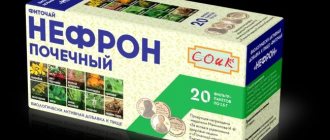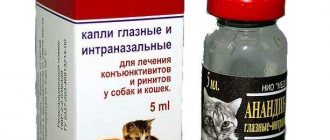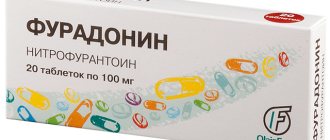Write a review
Reviews: 0
Manufacturers: Medana Pharma TERPOL Group JS, Co. (Poland)
Active ingredients
- Sulfamethoxazole
- Trimethoprim
Disease class
- Purulent and unspecified otitis media
- Acute sinusitis
- Pneumonia without specifying the pathogen
- Chronic sinusitis
- Bronchitis, not specified as acute or chronic
- Abscess of the lung and mediastinum
- Pyothorax
- Skin abscess, boil and carbuncle
- Pyoderma
- Cholera, unspecified
- Typhoid fever
- Paratyphoid fever, unspecified
- Diarrhea and gastroenteritis of suspected infectious origin
- Gonococcal infection
- Urethritis and urethral syndrome
- Inflammatory disease of the prostate, unspecified
- Salpingitis and oophoritis
Clinical and pharmacological group
- Not indicated. See instructions
Pharmacological action
- Broad spectrum antibacterial action
- Bactericidal
Pharmacological group
- Sulfonamides
Oral tablets Biseptol (Bisepto)
Instructions for medical use of the drug
Description of pharmacological action
A combined antimicrobial drug consisting of sulfamethoxazole and trimethoprim. Sulfamethoxazole, similar in structure to PABA, disrupts the synthesis of dihydrofolic acid in bacterial cells, preventing the inclusion of PABA in its molecule. Trimethoprim enhances the effect of sulfamethoxazole by interfering with the reduction of dihydrofolic acid to tetrahydrofolic acid, the active form of folic acid responsible for protein metabolism and microbial cell division.
Indications for use
- respiratory tract infections (bronchitis, pneumonia, lung abscess, pleural empyema, otitis media, sinusitis); - infections of the genitourinary system (pyelonephritis, urethritis, salpingitis, prostatitis), incl. gonorrheal nature; — gastrointestinal infections (dysentery, cholera, typhoid fever, paratyphoid fever, diarrhea); - infections of the skin and soft tissues (pyoderma, furunculosis, etc.).
Release form
Tablets 120 mg; blister 20 cardboard pack 1; Tablets 480 mg; blister 20 cardboard pack 1;
Pharmacodynamics
It is a broad-spectrum bactericidal drug, active against the following microorganisms: Streptococcus spp. (hemolytic strains are more sensitive to penicillin), Staphylococcus spp., Streptococcus pneumoniae, Neisseria meningitidis, Neisseria gonorrhoeae, Escherichia coli (including enterotoxigenic strains), Salmonella spp. (including Salmonella typhi and Salmonella paratyphi), Vibrio cholerae, Bacillus anthracis, Haemophilus influenzae (including ampicillin-resistant strains), Listeria spp., Nocardia asteroides, Bordetella pertussis, Enterococcus faecalis, Klebsiella spp., Proteus spp., Pasteurella spp., Francisella tularensis , Brucella spp., Mycobacterium spp. (including Mycobacterium leprae), Citrobacter, Enterobacter spp., Legionella pneumophila, Providencia, some species of Pseudomonas (except Pseudomonas aeruginosa), Serratia marcescens, Shigella spp., Yersinia spp., Morganella spp., Pneumocystis carinii, Chlamydia spp. ., (including Chlamydia trachomatis, Chlamydia psittaci); protozoa: Plasmodium spp., Toxoplasma gondii, pathogenic fungi, Actinomyces israelii, Coccidioides immitis, Histoplasma capsulatum, Leishmania spp. Resistant to the drug: Corynebacterium spp., Pseudomonas aeruginosa, Mycobacterium tuberculosis, Treponema spp., Leptospira spp., viruses. Inhibits the vital activity of E. coli, which leads to a decrease in the synthesis of thiamine, riboflavin, nicotinic acid and other B vitamins in the intestines. The duration of the therapeutic effect is 7 hours.
Pharmacokinetics
When taken orally, both components of the drug are completely absorbed from the gastrointestinal tract. Cmax of the active components of the drug is observed after 1–4 hours. Trimethoprim penetrates well into cells and through tissue barriers - into the lungs, kidneys, prostate gland, bile, saliva, sputum, cerebrospinal fluid. The binding of trimethoprim to plasma proteins is 50%, T1/2 is normally 8.6–17 hours. The main route of elimination is through the kidneys (50% unchanged). Sulfamethoxazole: plasma protein binding is 66%, normal T1/2 is 9–11 hours. The main route of elimination is through the kidneys, with 15–30% in the active form.
Use during pregnancy
Contraindicated during pregnancy. Breastfeeding should be stopped during treatment.
Contraindications for use
- hypersensitivity to co-trimoxazole, trimethoprim, sulfonamides or any component of the drug; - pregnancy; - lactation period; - children under 3 years of age (for this dosage form); — an established diagnosis of damage to the liver parenchyma; severe renal failure, if it is not possible to determine the concentration of the drug in the blood plasma (use of creatinine Cl is not recommended - severe hematological diseases (aplastic anemia, B-12 deficiency anemia, agranulocytosis, leukopenia, megaloblastic anemia, hyperbilirubinemia in children associated with folic acid deficiency acid); - glucose-6-phosphate dehydrogenase deficiency (probability of hemolysis). With caution: - folic acid deficiency; - bronchial asthma; - thyroid disease.
Side effects
From the nervous system: headache, dizziness; in some cases - aseptic meningitis, depression, apathy, tremor, peripheral neuritis. From the respiratory system: bronchospasm, suffocation, cough, pulmonary infiltrates. From the gastrointestinal tract: nausea, vomiting, loss of appetite, diarrhea, gastritis, abdominal pain, glossitis, stomatitis, cholestasis, increased activity of “liver” transaminases, hepatitis, sometimes with cholestatic jaundice, hepatonecrosis, pseudomembranous enterocolitis, pancreatitis. From the hematopoietic organs: leukopenia, neutropenia, thrombocytopenia, agranulocytosis, megaloblastic anemia, aplastic and hemolytic anemia, eosinophilia, hypoprothrombinemia, methemoglobinemia. From the urinary system: polyuria, interstitial nephritis, impaired renal function, crystalluria, hematuria, increased urea concentration, hypercreatininemia, toxic nephropathy with oliguria and anuria. From the musculoskeletal system: arthralgia, myalgia. Allergic reactions: itching, photosensitivity, urticaria, drug fever, rash, exudative erythema multiforme (including Stevens-Johnson syndrome), toxic epidermal necrolysis (Lyell's syndrome), exfoliative dermatitis, allergic myocarditis, fever, angioedema, scleral hyperemia. Other: hypoglycemia, hyperkalemia, hyponatremia
Directions for use and doses
Inside, after meals, with a sufficient amount of liquid. The dose is set individually. Children: from 3 to 5 years old - 2 tablets. (120 mg) 2 times a day; from 6 to 12 years - 4 tablets. (120 mg) or 1 tablet. (480 mg) 2 times a day. For pneumonia - 100 mg/kg/day (calculated as sulfamethoxazole), interval between doses - 6 hours, course of treatment - 14 days. For gonorrhea - 2 g (calculated as sulfamethoxazole) 2 times a day, with an interval of 12 hours.
Overdose
It is not known what dose of co-trimoxazole can be life-threatening. Symptoms: in case of sulfonamide overdose - lack of appetite, intestinal colic, nausea, vomiting, dizziness, headache, drowsiness, loss of consciousness. Fever, hematuria, crystalluria, and later bone marrow suppression and jaundice may develop. In case of an overdose of trimethoprim - nausea, vomiting, dizziness, headache, depression, disturbance of consciousness, suppression of bone marrow function. Treatment: discontinuation of the drug, gastric lavage (no later than 2 hours after taking the drug) or induction of vomiting, drinking plenty of fluids (if diuresis is insufficient and renal function is preserved). Administration of calcium folinate - 5–10 mg/day. Acidic urine accelerates the elimination of trimethoprim, but may also increase the risk of sulfonamide crystallization in the kidneys. Chronic overdose of co-trimoxazole (when using high doses over a long period) - suppression of bone marrow function, manifested by thrombocytopenia, leukopenia or megaloblastic anemia.
Interactions with other drugs
The drug is not recommended to be taken simultaneously with thiazide diuretics due to the risk of thrombocytopenia (bleeding). Co-trimoxazole increases the anticoagulant activity of indirect anticoagulants, as well as the effect of hypoglycemic drugs and methotrexate. Reduces the intensity of hepatic metabolism of phenytoin (extends its T1/2 by 39%) and warfarin, enhancing their effect. Rifampicin reduces T1/2 of trimethoprim. Pyrimethamine in doses exceeding 25 mg/week increases the risk of developing megaloblastic anemia. Diuretics (usually thiazides) increase the risk of thrombocytopenia. Benzocaine, procaine, procainamide and other drugs, the hydrolysis of which produces PABA, reduce the effect of the drug. Between diuretics (thiazides, furosemide, etc.) and oral hypoglycemic drugs (sulfonylurea derivatives), on the one hand, and antimicrobial sulfonamides, on the other, the development of a cross-allergic reaction is possible. Phenytoin, barbiturates, PAS - increase the manifestations of folic acid deficiency. Salicylic acid derivatives enhance the effect of the drug. Ascorbic acid, hexamethylenetetramine and other drugs that acidify urine increase the risk of developing crystalluria. Cholestyramine reduces absorption, so it should be taken 1 hour after or 4-6 hours before taking co-trimoxazole. Medicines that inhibit bone marrow hematopoiesis increase the risk of myelosuppression. May increase plasma concentrations of digoxin in some elderly patients. May reduce the effectiveness of tricyclic antidepressants. In patients after kidney transplantation taking co-trimoxazole and cyclosporine, there is a transient dysfunction of the transplanted kidney, manifested by an increase in serum creatinine concentration, which is probably caused by the effect of trimethoprim. Reduces the reliability of oral contraception (inhibits intestinal microflora and reduces the enterohepatic circulation of hormonal compounds).
Special instructions for use
The drug should be prescribed with caution if there is a deficiency of folic acid in the body, bronchial asthma, or a family history of allergies. With long-term (over 1 month) courses of treatment, regular blood tests are necessary, since there is a possibility of hematological changes (most often asymptomatic). These changes can be reversible by administering folic acid at a dose of 3–6 mg/day, which does not significantly impair the antimicrobial activity of the drug. Particular care should be taken when treating elderly patients or patients with suspected underlying folate deficiency. The administration of folic acid is also advisable for long-term treatment in high doses. To prevent crystalluria, it is recommended to maintain a sufficient volume of urine excreted. The likelihood of toxic and allergic complications from sulfonamides increases significantly with a decrease in the filtration function of the kidneys. During treatment, it is not advisable to consume foods containing large quantities of PABA - green parts of plants (cauliflower, spinach, legumes), carrots, tomatoes. Excessive sun and UV exposure should be avoided. The risk of side effects is significantly higher in patients with AIDS. It is not recommended for use in tonsillitis and pharyngitis caused by group A beta-hemolytic streptococcus due to widespread strain resistance. Impact on laboratory results: trimethoprim may change the results of determining the level of methotrexate in serum carried out by the enzymatic method, but does not affect the result when choosing a radioimmunological method. Co-trimoxazole can increase the results of the Jaffe reaction with picric acid (for the quantitative determination of creatinine) by 10%.
Storage conditions
List B.: At a temperature not exceeding 25 °C.
Best before date
60 months
ATX classification:
J Antimicrobials for systemic use
J01 Antimicrobials for systemic use
J01E Sulfonamides and trimethoprim
J01EE Sulfonamides in combination with trimethoprim (including its derivatives)
J01EE01 Sulfamethoxazole and trimethoprim
Biseptol®
The drug should be prescribed only in cases where the benefits of such combination therapy outweigh the possible risks compared to other antibacterial single drugs. Since the sensitivity of bacteria to antibacterial drugs in vitro
varies across different geographic areas and over time, local bacterial susceptibility data should be taken into account when selecting a drug. Sulfamethoxazole + trimethoprim is not recommended for use in tonsillitis and pharyngitis, which are caused by group A P-hemolytic streptococcus, due to widespread resistance of the strains.
Rare cases of life-threatening complications associated with the use of sulfonamides have been described, including liver necrosis, aplastic anemia, agranulocytosis, other blood disorders and hypersensitivity reactions in the respiratory system (pulmonary infiltrates).
Hypersensitivity and allergic reactions:
At the first appearance of skin rash or any other severe adverse reaction, the drug should be discontinued. Patients with a tendency to allergic reactions and bronchial asthma should prescribe Biseptol® with caution.
Infiltrates in the lungs
(like eosinophilic or allergic alveolitis) may present with symptoms such as cough or shortness of breath. If these symptoms appear or suddenly increase, it is necessary to re-examine the patient and consider stopping treatment with Biseptol®.
Kidney disorders:
sulfonamides, including Biseptol®, may increase diuresis, especially in patients with edema caused by heart failure.
Careful monitoring of renal function and potassium concentration in the blood serum is necessary for patients receiving high doses of Biseptol® (including during treatment of Pneumocystis pneumonia caused by P. jirovecii
), as well as the following groups: patients with a history of impaired potassium metabolism receiving standard doses drug; patients with renal failure; patients receiving drugs that contribute to the development of hyperkalemia.
Serious adverse reactions:
Fatalities, although rare, have been reported associated with adverse reactions such as blood disorders, Stevens-Johnson syndrome, toxic epidermal necrolysis (Lyell's syndrome), drug rash with eosinophilia and systemic manifestations (DRESS syndrome), and fulminant hepatic necrosis . Patients should be informed of the signs and symptoms of skin reactions and the need to closely monitor their development. The greatest risk of developing Stevens-Johnson syndrome or toxic epidermal necrolysis is observed during the first weeks of treatment. Treatment with Biseptol® should be discontinued if signs of Stevens-Johnson syndrome or toxic epidermal necrolysis appear. The best results in the treatment of Stevens-Johnson syndrome or toxic epidermal necrolysis can be achieved if they are detected early and the drug that may be causing it is immediately stopped. If during treatment with Biseptol® the patient develops Stevens-Johnson syndrome or toxic epidermal necrolysis, treatment with this drug should not be resumed.
In patients with AIDS treated with sulfamethoxazole + trimethoprim due to infection with Pneumocystis jirovecii
, adverse events are more often observed, in particular, rash, increased body temperature, leukopenia, increased aminotransferase activity in the blood plasma, hyperkalemia and hyponatremia.
While taking sulfamethoxazole + trimethoprim (as with other antibacterial drugs), pseudomembranous colitis may develop.
In mild cases of pseudomembranous colitis, simply stopping the drug is sufficient. In moderate to severe cases, it is necessary to replace the loss of fluid, electrolytes and protein, and also use antibacterial agents that affect Clostridium difficile
(metronidazole or vancomycin). You should not take drugs that inhibit peristalsis, as well as other drugs with antidiarrheal effects.
Special patient groups:
in elderly and senile patients, as well as in patients with concomitant diseases, for example, impaired renal and/or liver function, or while taking other drugs, there is an increased risk of severe adverse reactions, which in these cases is related to the dose and duration therapy.
The most common severe adverse reactions in elderly patients are severe skin reactions, myelosuppression, and thrombocytopenia with or without purpura. Concomitant use of diuretics increases the risk of developing purpura.
The duration of treatment with Biseptol® should be as short as possible, especially in elderly and senile patients.
If renal function is impaired, the dose should be adjusted according to the instructions in the "Dosage and Administration" section. Patients with severe renal impairment (creatinine clearance 15-30 ml/min) receiving sulfamethoxazole + trimethoprim should be carefully monitored for the development of toxicity symptoms (nausea, vomiting, hyperkalemia).
For patients with severe hematological diseases, Biseptol® can be prescribed only in exceptional cases.
Elderly and senile patients, as well as patients with pre-existing folic acid deficiency or renal failure, may experience
hematological changes characteristic of folic acid deficiency. They disappear after administration of folic acid (3-6 mg/day).
Due to the risk of hemolysis, Biseptol® should not be prescribed to patients with glucose-6-phosphate dehydrogenase deficiency, except in cases of absolute indications, and should be used only in minimal doses.
As with any sulfonamides, caution should be exercised in patients with porphyria or thyroid dysfunction.
Patients whose metabolic processes are characterized by “slow acetylation” are more likely to develop idiosyncrasy to sulfonamides.
Long-term therapy:
with long-term use of the drug Biseptol®, it is necessary to regularly determine the number of blood cells. If there is a significant decrease in the number of any blood cells, Biseptol® should be discontinued.
Patients receiving long-term treatment with Biseptol® (especially with renal failure) should regularly undergo a general urine test and monitor kidney function. During treatment, it is necessary to ensure sufficient fluid intake and adequate diuresis to prevent crystalluria.
During treatment with Biseptol®, it is not recommended to consume foods containing large amounts of PABA - green vegetables (cauliflower, spinach, legumes), carrots, tomatoes.
Excessive sun and UV exposure should be avoided.
Similar drugs:
- Augmentin Oral tablets
- Tea tree DN Ointment for external use
- Augmentin Powder for suspension for oral administration
- Bactrim Oral suspension
- Dioxydin Mouth rinse solution
- Pancef Oral tablets
- Nifuroxazide (Nifuroxazide) Oral tablets
- Cifran OD Oral tablets
- Pancef Granules for the preparation of suspension for oral administration
- Augmentin ES Powder for oral solution
** The Drug Directory is intended for informational purposes only. For more complete information, please refer to the manufacturer's instructions. Do not self-medicate; Before starting to use the drug Biseptol, you should consult a doctor. EUROLAB is not responsible for the consequences caused by the use of information posted on the portal. Any information on the site does not replace medical advice and cannot serve as a guarantee of the positive effect of the drug.
Are you interested in the drug Biseptol? Do you want to know more detailed information or do you need a doctor's examination? Or do you need an inspection? You can make an appointment with a doctor - the Euro lab is always at your service! The best doctors will examine you, advise you, provide the necessary assistance and make a diagnosis. You can also call a doctor at home . Euro lab clinic is open for you around the clock.
** Attention! The information presented in this medication guide is intended for medical professionals and should not be used as a basis for self-medication. The description of the drug Biseptol is provided for informational purposes and is not intended for prescribing treatment without the participation of a doctor. Patients need to consult a specialist!
If you are interested in any other drugs and medications, their descriptions and instructions for use, information about the composition and form of release, indications for use and side effects, methods of use, prices and reviews of drugs, or you have any other questions and suggestions - write to us, we will definitely try to help you.
Biseptol®
When Biseptol is used simultaneously with thiazide diuretics, there is a risk of developing thrombocytopenia and bleeding (the combination is not recommended).
Co-trimoxazole increases the anticoagulant activity of indirect anticoagulants, as well as the effect of hypoglycemic drugs and methotrexate.
Co-trimoxazole reduces the intensity of hepatic metabolism of phenytoin (increases its T1/2 by 39%) and warfarin, enhancing their effect.
Rifampicin reduces T1/2 of trimethoprim.
When used concomitantly, pyrimethamine in doses exceeding 25 mg/week increases the risk of developing megaloblastic anemia.
When used concomitantly, diuretics (usually thiazides) increase the risk of thrombocytopenia.
Benzocaine, procaine, procainamide (as well as other drugs, as a result of the hydrolysis of which PABA is formed) reduce the effectiveness of Biseptol.
Between diuretics (including thiazides, furosemide) and oral hypoglycemic agents (sulfonylurea derivatives), on the one hand, and antibacterial agents of the sulfonamide group, on the other hand, the development of a cross-allergic reaction is possible.
Phenytoin, barbiturates, PAS increase the manifestations of folic acid deficiency when used simultaneously with Biseptol.
Salicylic acid derivatives enhance the effect of Biseptol.
Ascorbic acid, hexamethylenetetramine (as well as other drugs that acidify urine) increase the risk of developing crystalluria during the use of Biseptol.
Cholestyramine reduces absorption when taken concomitantly with other drugs, so it should be taken 1 hour after or 4-6 hours before taking co-trimoxazole.
When used simultaneously with drugs that inhibit bone marrow hematopoiesis, the risk of developing myelosuppression increases.
In some cases, Biseptol® may increase the concentration of digoxin in the blood plasma in elderly patients.
Biseptol® may reduce the effectiveness of tricyclic antidepressants.
In patients after kidney transplantation, with the simultaneous use of co-trimoxazole and cyclosporine, there is a passing dysfunction of the transplanted kidney, manifested by an increase in serum creatinine concentrations, which is probably caused by the effect of trimethoprim.
Reduces the effectiveness of oral contraception (inhibits intestinal microflora and reduces the enterohepatic circulation of hormonal agents).




